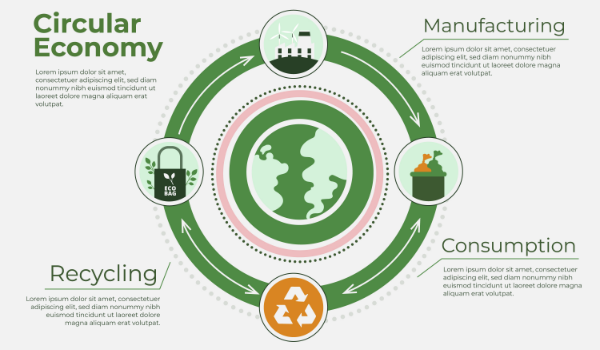Waste & Circular Economy
Circular Economy

The circular economy represents a profound shift in our approach to resource management and economic growth. It envisions a world where the traditional linear “take, make, dispose” model is replaced with a closed-loop system. In this regenerative system, products and materials are designed to be reused, remanufactured, or recycled, thus minimizing waste and reducing environmental impact. Embracing the circular economy means considering the entire lifecycle of products, from sourcing sustainable materials to designing for longevity and ease of disassembly.
By doing so, businesses can reduce their carbon footprint, conserve resources, and create innovative, sustainable solutions that benefit both the environment and the bottom line. The circular economy isn’t just a buzzword; it’s a fundamental shift that offers long-term benefits for companies willing to adopt its principles. It encourages innovation, resource efficiency, and the development of new business models that prioritize sustainability. In essence, it’s about reimagining our approach to consumption and production, with an eye toward a more sustainable, resilient future.
- Definition: The circular economy is a regenerative approach to design, production, and consumption, aiming to minimize waste and make the most of resources.
- Benefits: Reduces environmental impact, conserves resources, lowers production costs, and fosters innovation.
- Sample Strategies:
- Implementing product take-back programs for recycling or refurbishment.
- Designing products for longevity and easy disassembly.
- Collaborating with suppliers to source recycled materials.
